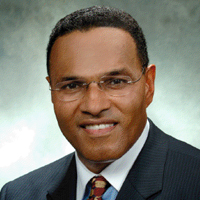What do you want little Niggra?
My background is that of a middle-class child growing up in the 1950s and ‘60s in Birmingham, Alabama at the very time of the Civil Rights Movement.
The Movement, its leaders, and our parents taught us a great deal about values—what’s right and wrong. We learned about the importance of teamwork from the many, many hours we spent in meetings with adults and other young people, talking about the challenges we faced and trying to understand the strategies and legal issues involved. I remember that my childhood friends and I talked with our parents about whether we would be allowed to participate in marches and the likely implications of doing so. I also recall hearing the rumors that teachers and other workers (like my mother and father) would lose their jobs if they marched. We witnessed the courage of fellow students and our families, and we took part in the Alabama Christian Movement’s evening meetings where we learned how spiritual music—from “I Ain’t Gonna Let Nobody Turn Me Around” to “Woke Up This Morning with My Mind Set on Freedom”—can fortify a people and give them a vehicle for expressing their aspirations and strong belief in lofty goals.
My memories of Birmingham in 1963 are vivid, indeed. As a ninth-grade student, I listened to adults seriously questioning the idea of asking children to march as a tactic in the struggle for civil rights. In fact, there were many middle-class Black families who, like prominent Black business leaders, were suspicious of Dr. King and the Movement. From my perspective, it was exhilarating to march for such a worthy cause, but frightening to encounter menacing police dogs and to spend time in jail with other children that spring. We believed, however, that we were very much a part of the Movement, and it was cathartic to learn that we could be agents of change. This realization was especially meaningful for me, because I was allowed not only to participate in the Birmingham marches, but to lead a group of kids to City Hall. Such an experience told me that our voices—the voices of the young—were significant, and that young people could think and act responsibly, and that our actions could change the course of history and the world.
I recall leaving my church (Sixth Avenue Baptist Church) and leading my line downtown, with the goal of kneeling on the steps of City Hall and praying for our freedom. My heart was pounding, and my head was swimming with fear. Before we could reach the steps, however, we were stopped by the Birmingham police. Police Commissioner “Bull” Connor, himself, stopped us and asked me, “What do you want little Niggra?” and, meaning to or not, spat on me. As I replied, “We want our freedom,” my fellow demonstrators and I were shoved into the paddy wagons in a moment of confusion.
In spite of the inspirational meetings and speeches, those children who went to the jail often found themselves in a frightening situation. For me, incarceration was especially depressing and unnerving because we were intentionally placed with juvenile delinquents who had had very hardened lives. In some cases, these delinquents were proud of us, but in other cases, they could be cruel. Like others, I spent my five days of confinement thinking about the meaning of freedom while constantly worrying about my own personal safety. I must admit that I began to breathe with ease only after my parents secured my release. Even after getting out, I was devastated to realize that I could not return to school. In fact, the local Board of Education had suspended all children who had participated in demonstrations and used this approach to discourage others from doing so. I distinctly remember worrying that, even as an A student, I might not be able to finish school, or that I might miss so much school work that I would be unable to excel. I will never forget the jubilation we all felt that night in one of the Movement’s church gatherings, when we learned that a federal judge in Atlanta had ruled that those of us who had marched could return to school and go on with our lives.
It was eye-opening to see how Americans of all races responded to the way we, as children, were treated in those demonstrations. It was the first time that people around the nation, including other Black children, had witnessed social action on the part of African American children over television. They saw the gross mistreatment of Black adults and children, alike, by Alabama’s and Birmingham’s White establishment—from the police, who brutally unleashed their dogs to bite us, to firemen, who used their powerful hoses to knock down little girls and boys.
We learned the importance of hating injustice rather than people, and of being on our best behavior and exercising strong self-control, especially when we were confronted by the police during the marches and while we were in jail. We learned, too, the value of controlling our emotions and of conducting ourselves as responsible citizens. Finally, we learned that America, at its best, cares deeply about its children, and that children touch the conscience of adults. The nation’s conscience was stirred, and people of all colors came to see this struggle not simply as a racial conflict but as a question of American justice.
This story is excerpted from “The role of youth in the civil rights movement: Reflections on Birmingham,” by Freeman A. Hrabowski, III, PhD, President, University of Maryland Baltimore County (1996), with the express permission of the author.




